NASA Sends One Twin To Space – He Returns Almost A Different Person
Are humans able to survive beyond our planet’s atmosphere? For years, NASA has been grappling with this very question. Finally, in 2015, they embarked on a groundbreaking mission to study the effects of long-term space travel on human beings. But, they didn’t choose just any astronauts for this mission–they picked a pair of identical twin brothers.
These two brothers made history as the only siblings who ventured into space. One brother stayed in the cosmos for a year, while the other remained on Earth. When the space-bound brother returned, he looked and felt completely different than his earthly counterpart. What did they find?
Space Siblings
It was February 21, 1964, in Orange, New Jersey, when a pair of identical twins entered the world. Little did Scott and Mark Kelly know that they would blaze a trail that no other siblings had ever done before–they both journeyed into the great unknown of space.

Source: Michael Stewart/ WireImage
Growing up, the twin siblings were no strangers to law enforcement as their parents were both police officers. But, despite this family legacy, the brothers wanted to be pilots. Eventually, Mark delved into aeronautical engineering, and Scott pursued naval aviation with a bachelor’s in electrical engineering.
Achieving A Childhood Dream
During the 1980s, the Kelly brothers were flying high–literally. Mark racked up an impressive 50,000 hours of flight time in 50 planes, while Scott logged an equally impressive 40,000 miles in 40 different planes. Despite the twins’ success in the world of military aviation, they decided to embark on a new challenge.
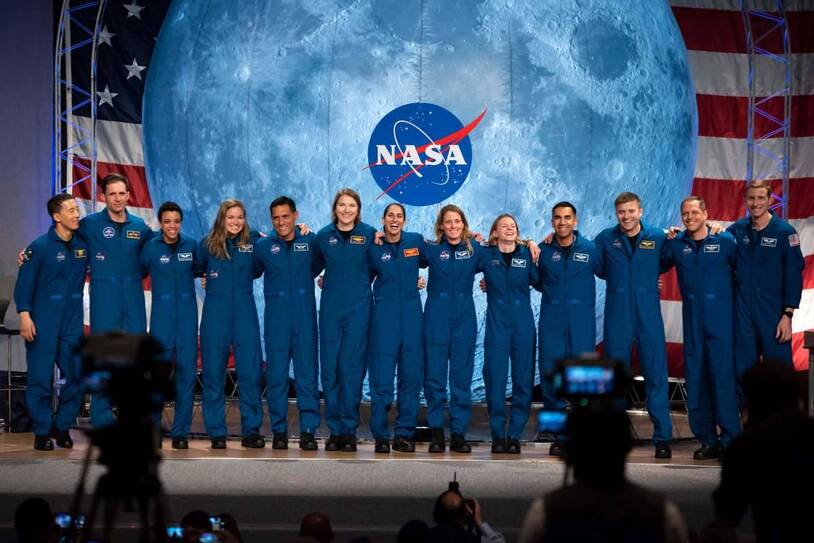
Source: MARK FELIX/AFP via Getty Images
In 1995, they took the bold step of applying to NASA. They were determined to make their childhood dreams of becoming astronauts a reality. By 1996, the brothers had been admitted into the prestigious NASA program. They served as skilled Space Shuttle pilots. Later on, NASA embarked on a groundbreaking study of the Kelly twins.
Twin Experiment
As NASA astronauts, Scott and Mark Kelly couldn’t help but wonder if their unique bond as identical twins might hold the key to unlocking discoveries about the mysteries of space travel. As the years went by, the brothers became convinced they were ideal candidates for scientific study.
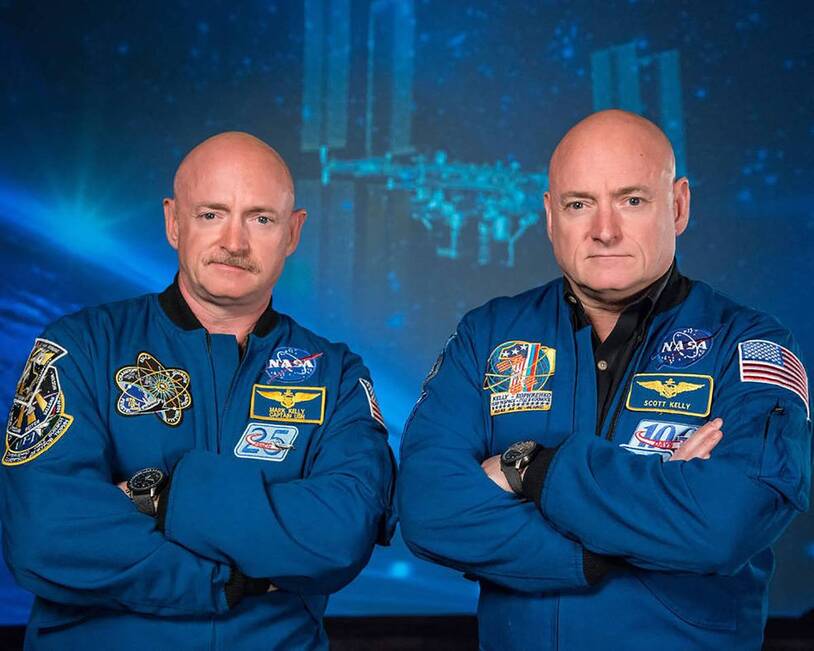
Source: ROBERT MARKOWITZ/NASA/AFP via Getty Images
Scott and Mark Kelly shared an astonishingly similar genetic makeup. As a result, they could offer a rare opportunity to explore the impact of long-term space travel on the human body. Would spending more time in space have a significant impact on the health of one of the twins?
NASA Was Not Interested
Scott was eager to take part in the experiment. He even brought up the subject to NASA shortly after he was hired as an astronaut. His passion and enthusiasm for the study were contagious. Not everyone was convinced, though. Some researchers believed that using only two brothers as test subjects was too small of a study to produce anything noteworthy.
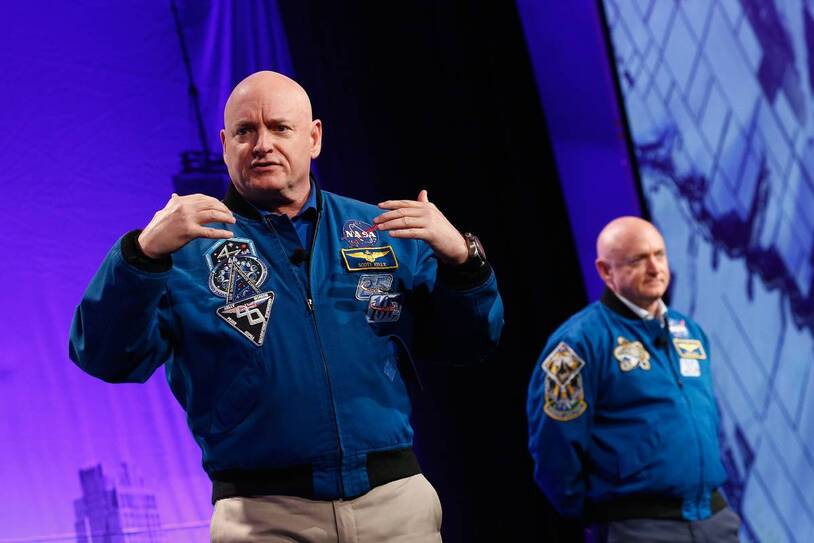
Source: Brian Ach/Getty Images for LocationWorld 2016
In 2013, when Scott Kelly was preparing to captain the International Space Station’s Expedition 45, NASA thought the experiment was finally feasible. After all, this was no ordinary mission, as it would mark the longest stay in space for any crew in history. It offered a once-in-a-lifetime opportunity to study the effects of long-term space travel on the human body.
NASA’s Change Of Heart
Why did NASA wait until 2013 to start the experiment? While the 1990s were a time of progress and technological advancement, Mars remained out of reach. But now, NASA’s goal is to send humans to the red planet by the 2030s. There is still much we don’t know about how the human body will react to the rigors of space travel and life on another planet.
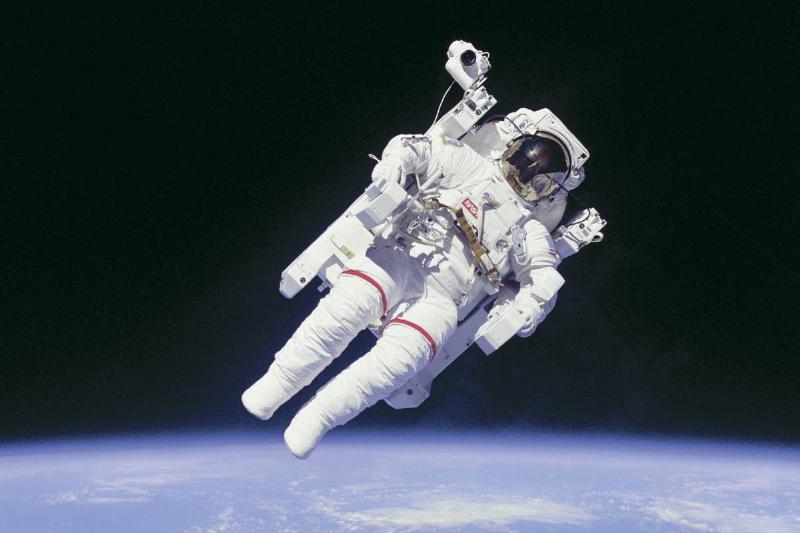
Source: Encyclopaedia Britannica/UIG Via Getty Images
What are the health effects of being in space for so long? Will our immune systems be compromised? Can we still expect to live as long as we do on Earth? These are the pressing questions that scientists must answer. NASA must ensure that our intrepid space explorers are equipped to survive and thrive.
Scott Kelly As The Subject Of The Experiment
Scott Kelly made history in 2013 when he boldly signed up to live in space for a year. As the crew captain (that included Russian cosmonaut Mikhail Kornienko), Scott knew that he was embarking on a journey, unlike anything that had ever been attempted.
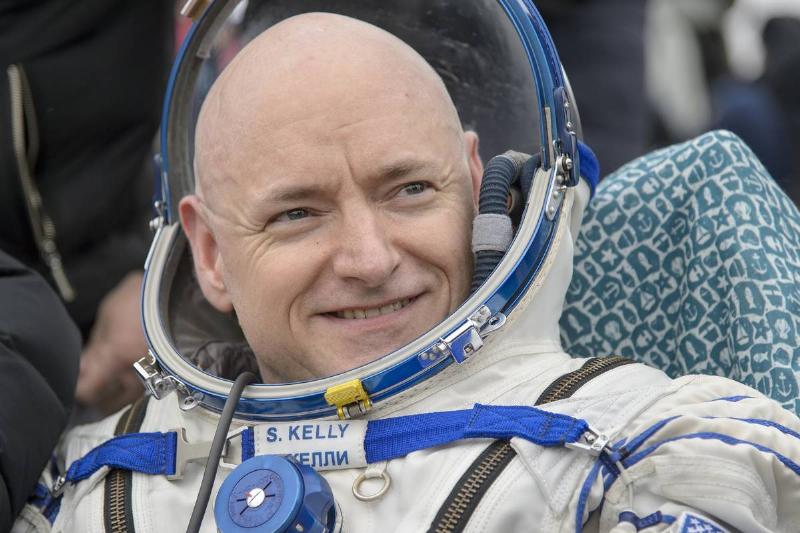
Source: Bill Ingalls/NASA via Getty Images
What started as a simple discussion turned into a full-blown study of the Kelly twins. It was an opportunity to learn more about how the human body reacts to life in zero gravity. For the twins, it was a chance to leave their mark on history and make a lasting contribution to space exploration.
Scott In Space
On March 27, 2015, the world watched as two brave astronauts–Scott Kelly and Mikhail Kornienko–embarked on a journey that would make history. Their destination was The International Space Station–a marvel of engineering that orbits the Earth and acts as a hub for scientific research and exploration.
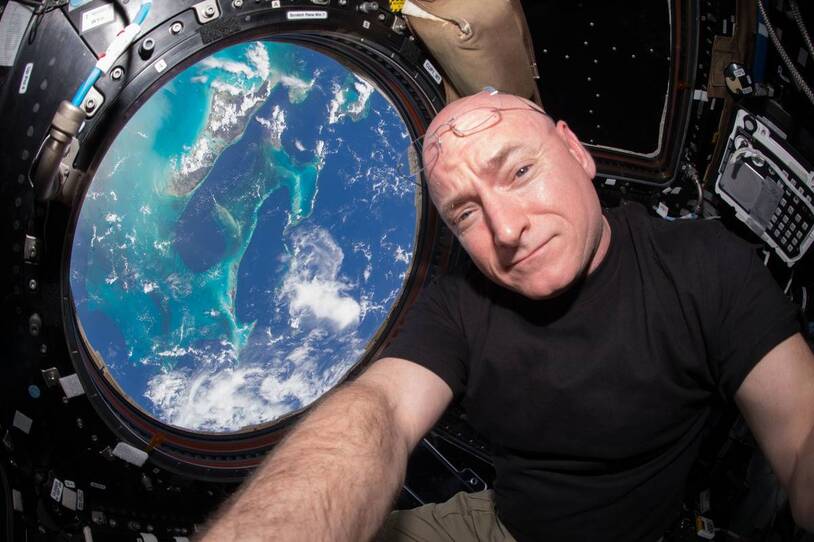
Source: NASA via Getty Images
While most astronauts only spend around 182 days in space, Scott and Mikhail braved life’s challenges in zero gravity for a whopping 340 days–a feat that had never been attempted before. If NASA were to send humans to Mars, a one-way trip would take three years.
Scott’s Self-Tests
During his record-breaking year in space, Scott was more than just an astronaut–he was also a living laboratory. He conducted tests and experiments on himself to better understand how outer space affects the human body. He took his urine samples, recorded his blood tests, and took cognitive quizzes, saliva samples, and even fecal matter samples.
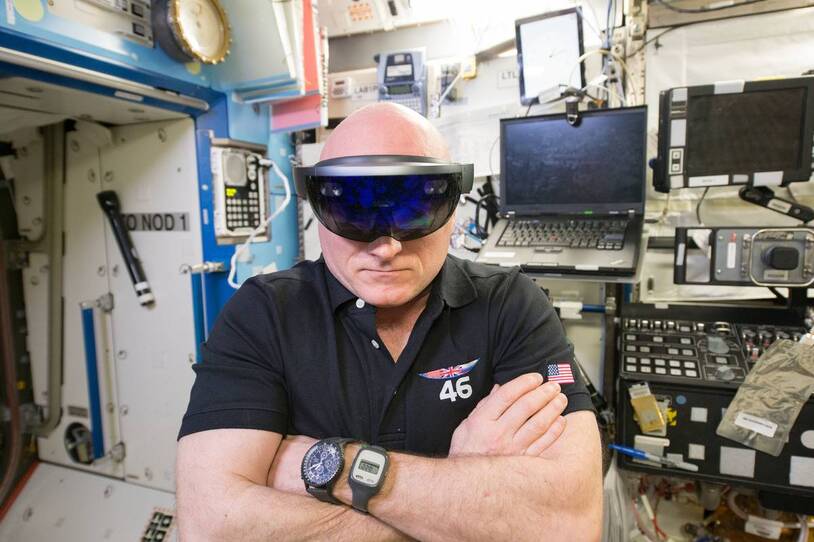
Source: NASA via Getty Images
Similarly, the spacecraft’s environment was also monitored. Radioactivity levels were observed. Scott and his team had to contend with the absence of gravity – and a never-ending stream of tasks and experiments. Essentially, life in space was a non-stop whirlwind of activity and stress.
Observing Mark On Earth
When Scott Kelly journeyed into space for his historic year-long mission, his twin brother Mark was right there with him–but not in the way you might think. Instead, Mark remained firmly grounded on Earth. He tracked his diet and work schedule while collecting urine and blood samples. Mark’s life was closely monitored in every detail, providing a valuable comparison to Scott’s experiences in space.
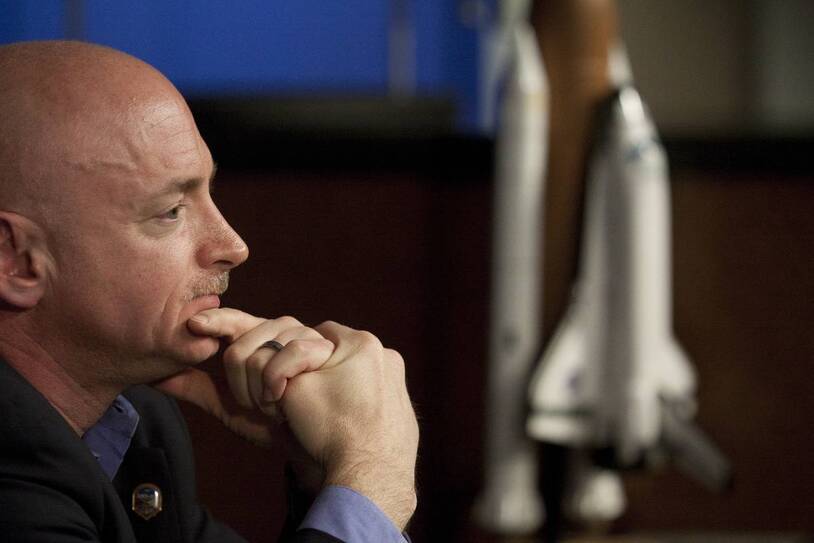
Source: Eric Kayne/ Getty Images
While Scott had to adhere to a strict diet and work schedule, Mark enjoyed a carefree existence as he ate and drank whatever he wanted. Both were working towards a common goal despite being separated.
Tests Continued Upon Scott’s Return To Earth
When Scott Kelly returned to Earth on March 1, 2016, he breathed a sigh of relief. But for scientists, the work was only beginning. Over the next six months, a team of researchers continued to analyze Scott’s blood, urine, cognitive function, and overall health. They wanted to know how the human body responds to prolonged exposure to weightlessness and if returning to Earth would set things right again.
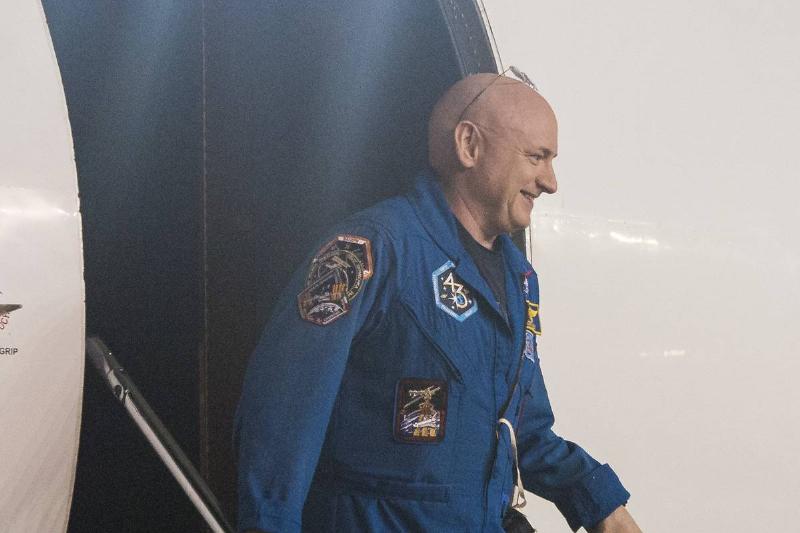
Source: Joel Kowsky/NASA via Getty Images
Since a prolonged stay in outer space causes astronauts to lose their muscle mass due to the absence of gravity, doing muscle exercises on Earth helps recover any muscle loss. Scientists wanted to know if the same can be seen in the body’s immune system and gut health.
The Results Of The Experiment
Analysis of the data collected from the Twin Study required the expertise of 84 researchers from 12 different universities. Finally, on April 11, 2019, the results of the Twin Study were published in the prestigious journal Science, marking a major milestone in the history of space research.
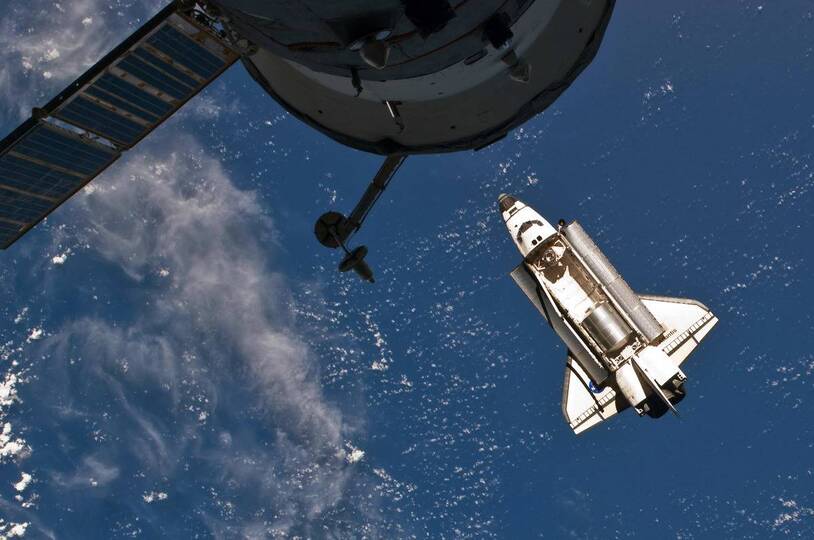
Source: NASA via Getty Images
As the study’s co-author Mike Snyder noted, this was the most in-depth study of its kind ever conducted. It delved deep into the biochemistry of the human body to uncover the secrets of space travel. The team compared Scott’s genetics to Mark’s, using the power of identical twin DNA to unlock new insights into the effects of long-term space travel on the human body.
Scott’s DNA In Space
According to geneticist Christopher Mason, over 1,000 of Scott’s genes changed. The most startling thing was the changes to Scott’s chromosomes which underwent a remarkable transformation. Parts of them were inverted, others flipped, leading to profound shifts in his biology that would take years to understand fully.

Source: Bill Ingalls/NASA via Getty Images
The Twin Study revealed astounding changes to his biology, particularly his immune system regulation. According to geneticist Christopher Mason, Scott’s body, while in space, was on high alert as it sought to understand and adapt to this new and unfamiliar environment.
Mark’s Profound Genetic Changes
Remarkably, Scott and Mark experienced significant changes in their DNA during the mission. While Scott’s genes went through a six-fold increase in mutation rate during the second half of his trip, Mark’s genetics also changed even more than Scott’s!
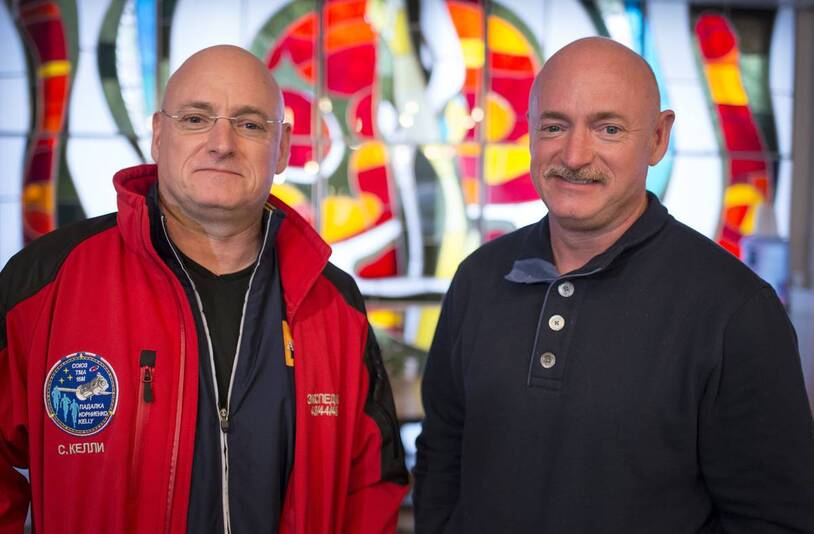
Source: Bill Ingalls/NASA via Getty Images
According to Andrew Feinberg, a geneticist at Johns Hopkins University, stress played a role in the differences observed in their DNA. While Mark faced the stress of frequent travel and a constantly changing diet on Earth, Scott encountered a unique set of stressors in space that may have triggered alterations in his body.
Scott’s Chromosomes
Scott Kelly’s time in space had a surprising effect on his chromosomes–the telomeres at the end of his chromosomes, which typically shorten as we age, actually lengthened. This unexpected result left scientists scratching their heads.
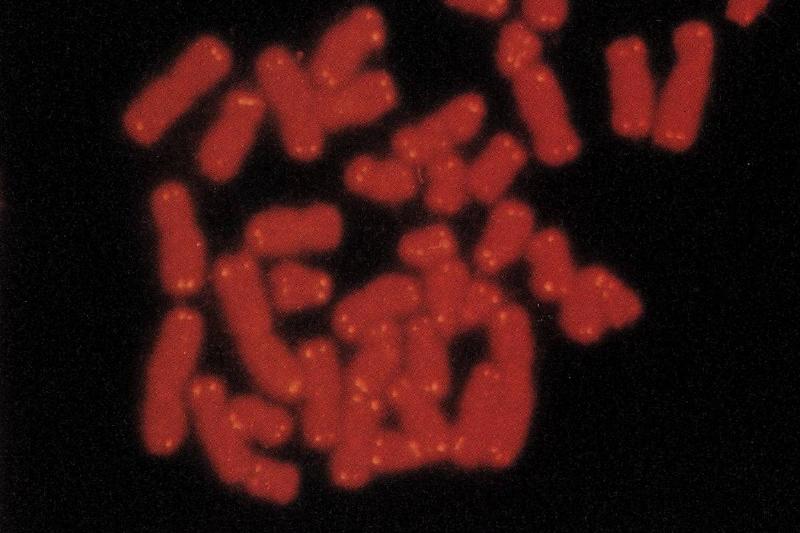
Source: Smith Collection/Gado/ Getty Images
According to Susan Bailey, a professor at Colorado State University, telomeres are known to shorten as people age. However, Scott’s lengthened while he was in space. Bailey believes that the enzyme telomerase might have been activated, rapidly repairing his chromosomes from radiation exposure resulting in telomere lengthening. Does that mean Scott Kelly returned from space looking younger?
Living Longer In Space?
If humans live on Mars, will they experience longer lifespans thanks to their time in space? Andrew Feinberg, one of the study’s authors, says it’s unlikely. Despite the changes in Scott Kelly’s telomeres during his time in space, they returned to their normal length within 48 hours of his return to Earth.
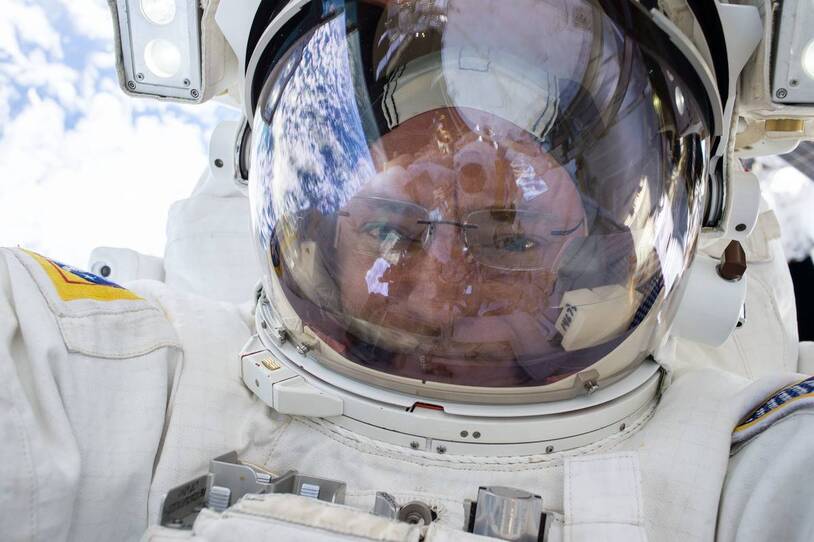
Source: NASA via Getty Images
Colorado State University professor, Bailey, was quick to point out that telomere elongation does not mean being in space is equal to discovering the fountain of youth. It was revealed that the odd lengthening and eventual shortening of telomeres in space might have shortened Scott’s life.
Scott’s Appearance Was Different
After a year of being apart, Mark finally saw his twin brother. While Scott appeared largely unchanged, there was a noticeable difference. His eyeballs had undergone some alterations, causing his vision to be less sharp. Researchers suggest that the cause of this change could be linked to exposure to carbon dioxide in space.
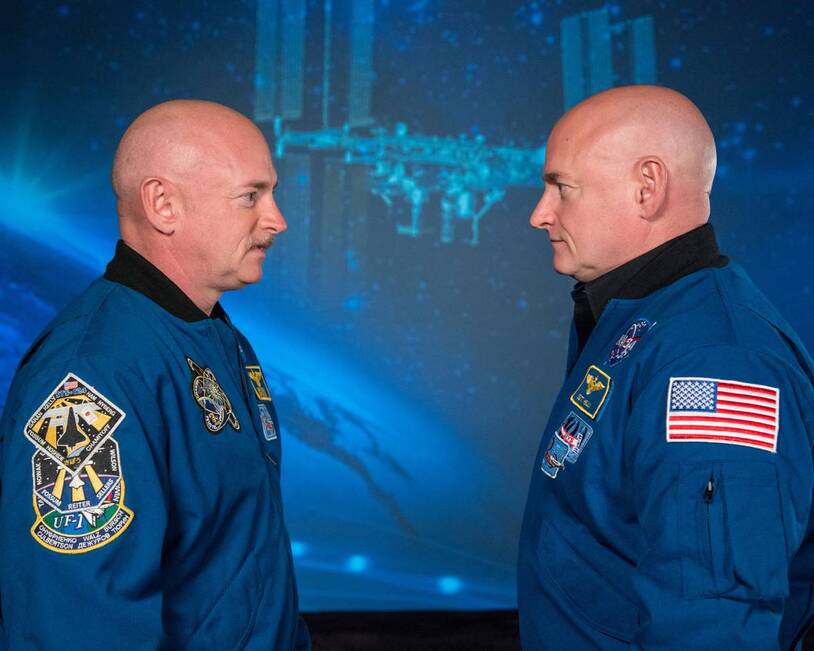
Source: ROBERT MARKOWITZ/NASA/AFP via Getty Images
In outer space, the carbon dioxide levels are about ten times higher than on Earth. This had a significant impact on Scott. He experienced constant pressure in his head, and his eyes would burn often. Interestingly, Scott could even tell the carbon dioxide levels without looking at any measurements.
Blood Flow In The Absence Of Gravity
In space, the lack of gravity changes the way blood flows in the body. On Earth, gravity pulls most of the blood down to the legs. Without it, the brain and chest receive more blood. This caused Scott Kelly to experience more fluid flow into his head than his Earthbound twin brother, Mark.

Source: NASA via Getty Images
After spending almost a year in space, Scott Kelly faced a common problem that all astronauts experience–returning to Earth. As gravity pushed the blood flow to his legs, he felt pain and discomfort in his lower limbs. Plus, his skin reacted with rashes and hives whenever he applied pressure. Fortunately, these symptoms eventually disappeared.
Restructuring Scott’s Body
Scott Kelly’s trip to space not only affected his DNA and immune system but also impacted his circulatory system. A team of researchers from the University of California, San Diego, delved into how Scott’s proteins changed during his time in space. They discovered that the increased blood flow near his head caused his arteries and blood vessels to harden.

Source: Eric Kayne/ Getty Images
Brinda Rana, leader of the University of California research team, highlights the resilience and adaptability of the body in response to different environments. With the potential for prolonged space travel missions on the horizon, the long-term health consequences of space travel remain a mystery. One thing is clear–the human body can handle even the most challenging conditions.
Scott’s Protein Production
According to the San Diego research team, Scott’s body created more collagen, a protein responsible for building hair and fingernails. Additionally, he had higher levels of aquaporin 2, a marker of dehydration, and this suggests that he might have had to drink more water in space to stay hydrated.
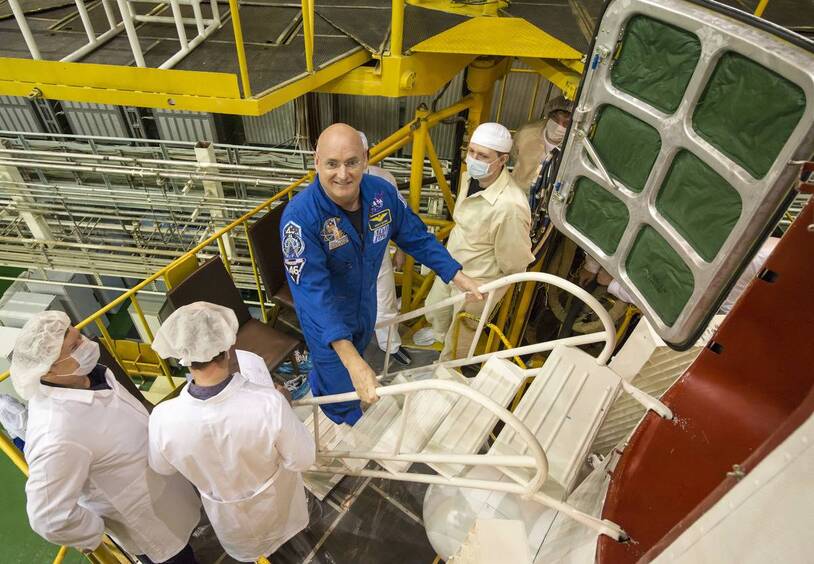
Source: Bill Ingalls/NASA via Getty Images
Brinda Rana, the health sciences researcher who spearheaded the team, expounded that Scott’s body had to undergo a lot of adaptations to cope with the harsh realities of space travel. However, once he returned to Earth, most of these symptoms vanished.
No Need To Worry
After Scott Kelly returned from his year-long space trip, scientists were curious to see how his genome had been impacted. As stressful situations and radiation exposure can lead to gene alterations, researchers were particularly interested in the state of Scott’s genes. Fortunately, medical researcher Andrew Feinberg reported that the genomic changes observed in Scott were not a cause for concern.
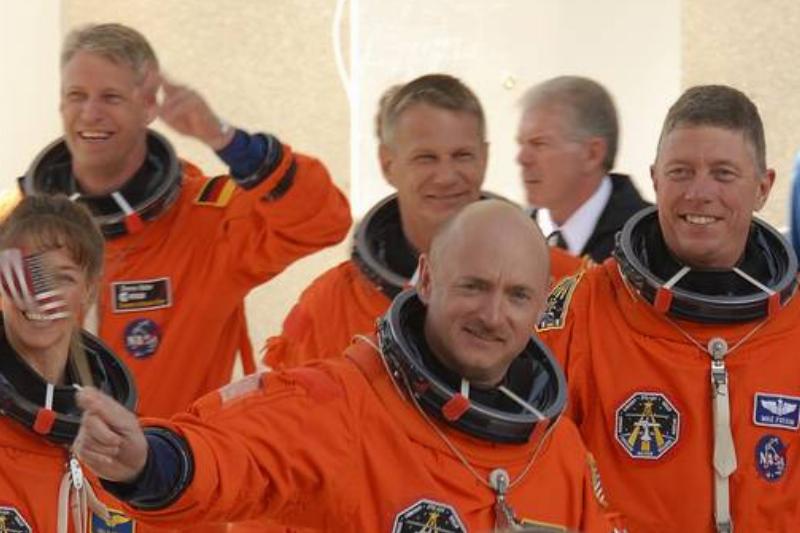
Source: Philip Scott Andrews/Roll Call/ Getty Images
While they did find some genetic differences, medical researcher Andrew Feinberg stated that these differences were not a cause for concern. 90% of Scott’s genes returned to their normal state upon landing.
What To Do With The Other 10%?
While 90% of his genes returned to normal, around 800 genes, roughly 10%, remained active. These genes controlled immune response and DNA repair and worked hard to help Scott’s body repair itself after his long stint in space.
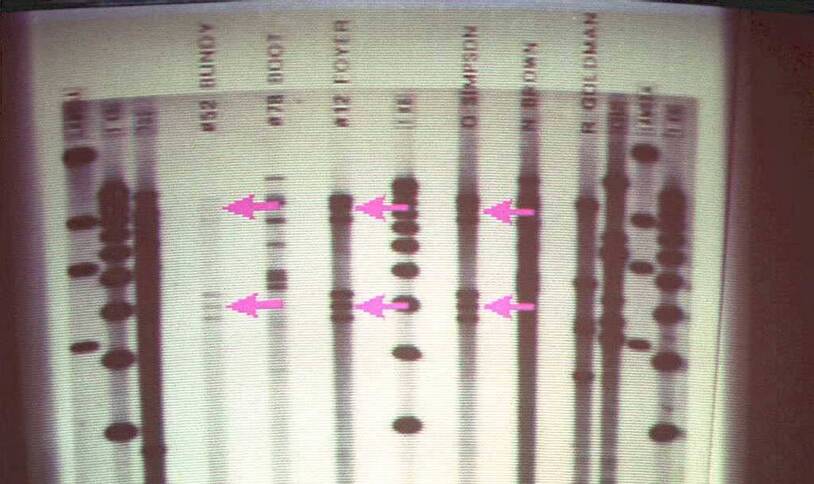
Source: KIM KULISH/AFP via Getty Images
Chris Mason, a geneticist who worked on Scott Kelly’s body study, believes there is evidence that Scott’s cells have retained a “memory” of his time in space. This means that even though he has returned to Earth, some parts of his body still adapt to the changes they underwent during his mission.
Increased Risk Of Age-Related Diseases
The unusual changes in Scott’s telomeres due to his time in space might have unintended outcomes. Susan Bailey, a radiation professor, speculates that this could have placed excessive stress on his body, potentially increasing his likelihood of age-related illnesses such as cardiovascular diseases and cancer.
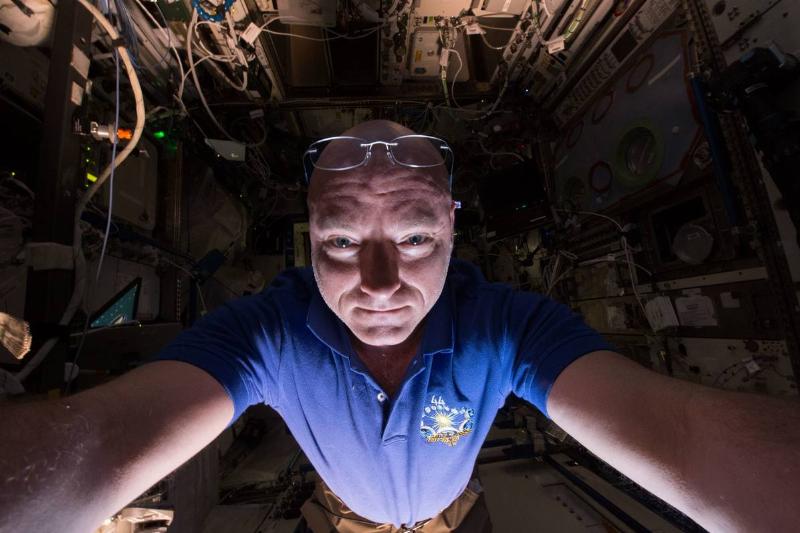
Source: NASA via Getty Images
While the twins need not give blood samples, they will continue to be the focus for years as NASA investigates the long-term effects of space travel. Did space affect the microbiome of his gut?
Psychological Change
Scott Kelly’s brain faced a unique challenge during his space mission. From puzzles to computerized tests, Scott took a variety of cognitive assessments throughout his trip. However, his performance declined rapidly in the second half of the flight. His scores continued to drop even after he landed.
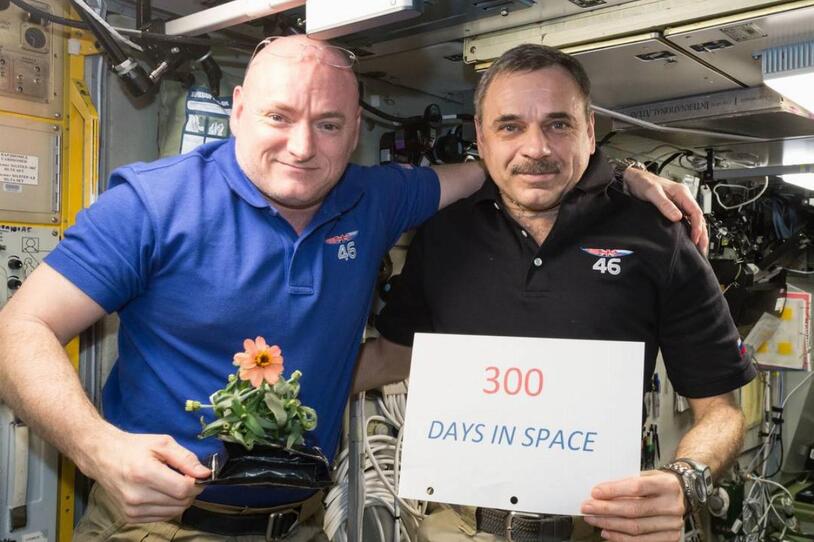
Source: NASA via Getty Images
Puzzles that he once solved with ease are now a struggle. It also takes him longer to process information. According to psychiatry professor Mathias Basner, addressing the potential impact of cognitive decline on emotional regulation, risk-taking, and attention was necessary, as these are all critical skills for astronauts.
The Reason For The Cognitive Decline
According to Mathias Basner, a psychiatry professor, Scott Kelly’s cognitive decline may have resulted from the stress of being in space. Basner’s team at the University of Pennsylvania stated that space is a very hostile environment.
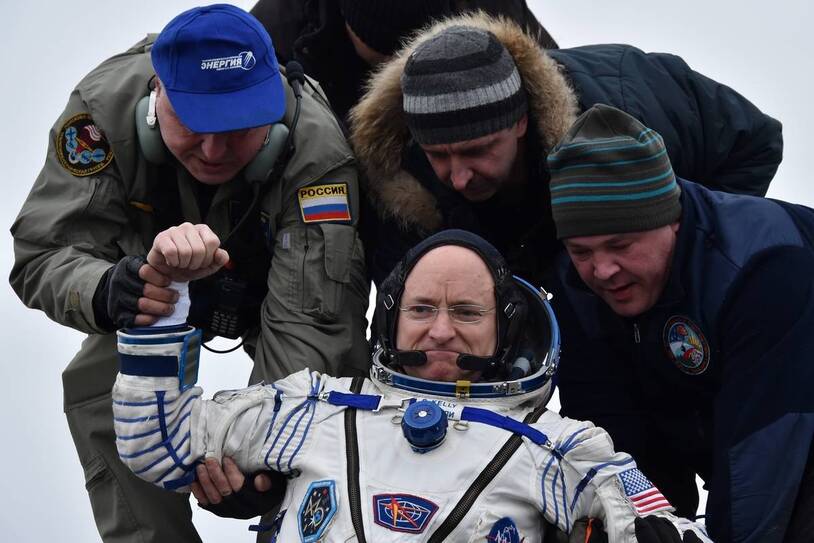
Source: KIRILL KUDRYAVTSEV/AFP via Getty Images
Scott’s declining cognitive test scores during his flight could be due to post-flight pain, exhaustion, or reduced motivation. But, Mathias Basner’s team at the University of Pennsylvania suggests stress as the primary factor. Therefore, a three-year trip to Mars would need further research and preparation.
Gut Bacteria Changes Were Evident
As the researchers delved into Scott’s physiology, another team at Northwestern University was investigating the astronaut’s gut microbiome. They discovered that certain bacterial types proliferate in space while others decrease. Still, the diversity of gut bacteria remained stable, indicating that the intestines remain healthy even in a microgravity environment.
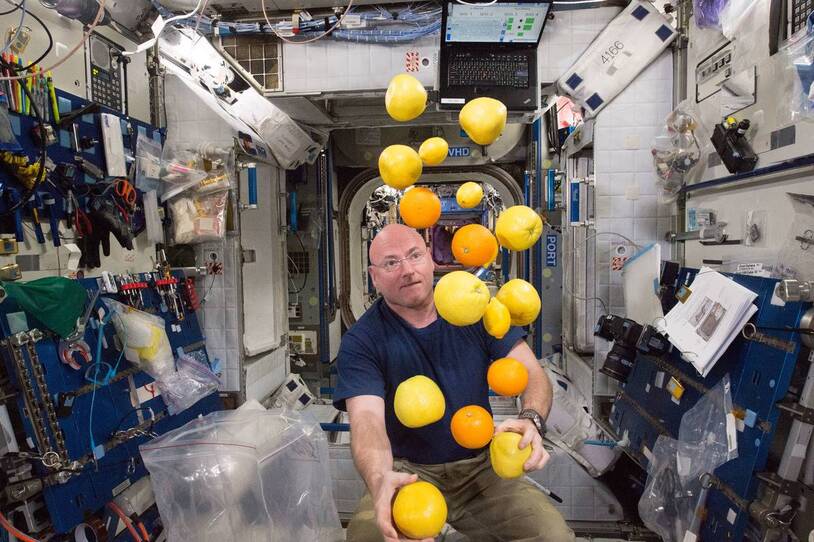
Source: NASA via Getty Images
Scott’s space trip left a mark on his gut bacteria, but fortunately, the microbiome returned to normal after he landed. However, the recovery process took longer than expected. Scientists are still trying to understand why this is the case and what it could mean for future space travel.
The Long-Term Effects On Scott’s Health
While the long-term effects of space travel are still uncertain, researchers have some predictions for what may happen. One concern is that Scott’s arteries may have hardened due to increased blood flow. His heart may have also weakened. Both are potential signs of heart disease.

Source: Adam Berry/ Getty Images
Scott has a hunch that his symptom might be related to his psychology. He explains that living in a regulated environment for an extended period, followed by a return to Earth, can be a life-altering event leading to potential psychological impacts.
Long Recovery Time
Scott is no stranger to space travel, having flown on several missions of varying durations. He told Space.com, “[I had] flown flights of increasing duration throughout my career: seven days; 13; 159 and 340.” However, with every mission, he found that the recovery time increased after returning to Earth.
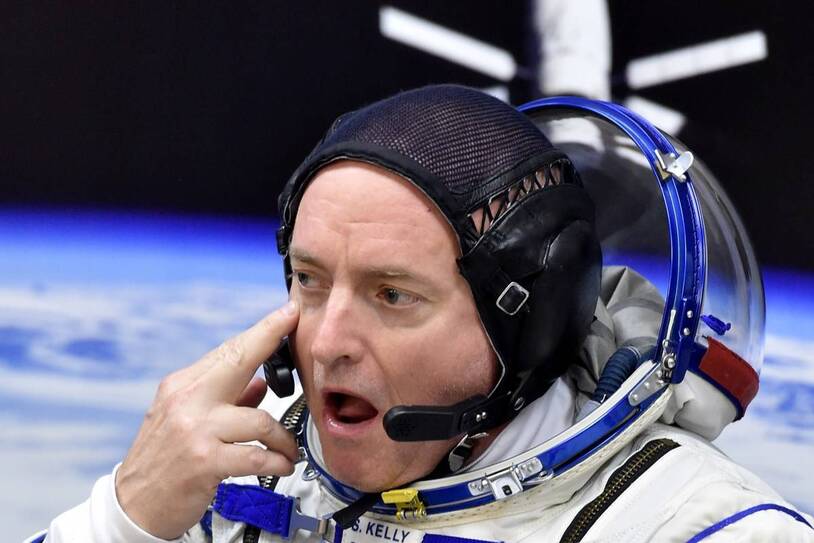
Source: KIRILL KUDRYAVTSEV/AFP via Getty Images
Still, Scott is confident that humans can go to Mars despite the challenges and risks of long-term space travel. He believes that his experience on the one-year mission has provided valuable insights into the physical and mental demands of such a journey.
Small Sample Size
Though the Twins Study has been a valuable source of information, it’s still too early to make sweeping generalizations about the effects of space travel on all astronauts. Scientists at the University of California, San Diego, point out that the sample size used in the study is too small to draw definitive conclusions.
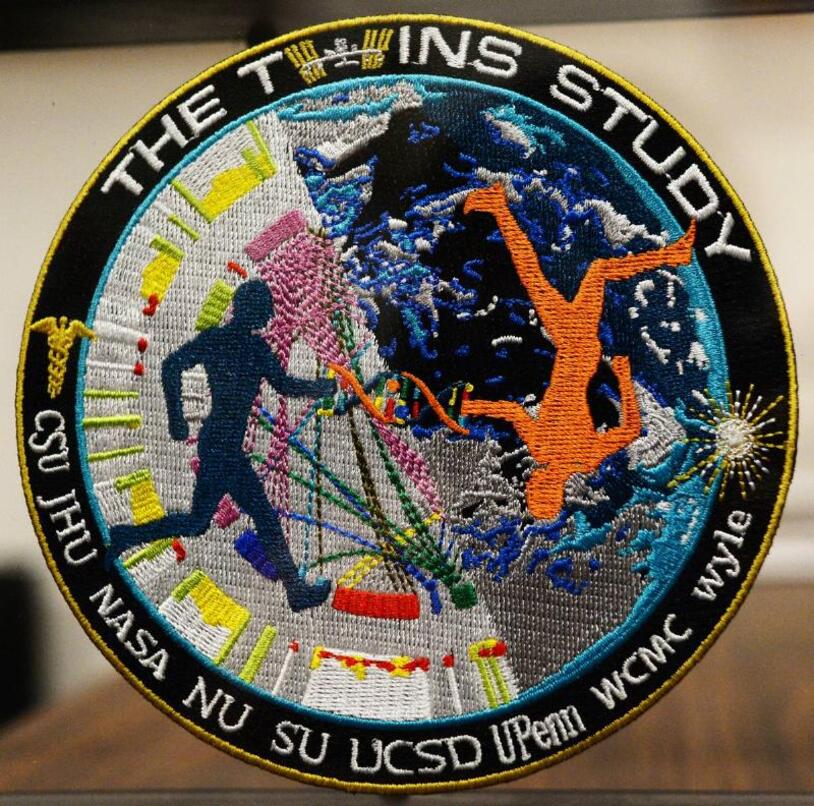
Source: RJ Sangosti/The Denver Post via Getty Images
Although the study has limitations, it provides a valuable roadmap for further research. Mark and Scott Kelly’s participation in the Twins Study provided NASA with a wealth of knowledge and insights into the effects of long-term space travel on the human body. The findings will allow NASA to better prepare for future missions to space.
Going To Mars Is 100% Possible
Though Scott Kelly’s experience of being in space for a year had some physical and psychological impacts, he still believes humans can go to Mars. Scott told Space.com that despite experiencing significant recovery time, he has faith in the ability of astronauts to handle a three-year trip to Mars.
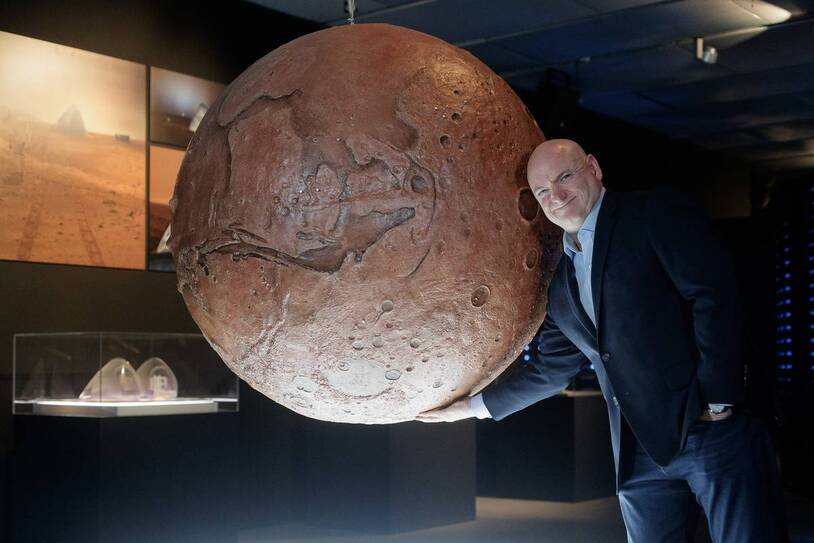
Source: Eduardo Parra/ Getty Images
Despite potential health concerns that Scott still needs to address, the results of the Twins Study have shown that there are “no showstoppers” that would prevent humans from traveling to the red planet. So, where are the Kelly twins now?
NASA’s Future Experiments
NASA is taking the Twins Study success to the next level. As per the Colorado State University press release, NASA has set up an ambitious plan to send ten astronauts on one-year missions, another ten on six-month missions, and the rest on two to three months trips at a time.

Source: NASA via Getty Images
The research is crucial for the future of space exploration and could pave the way for humans to reach Mars and beyond. Similar to the Twins Study, these experiments will similarly track astronauts who will stay on Earth. It will also assess the quantity of bed rest astronauts need when they go home.
Need For Artificial Gravity
In a fascinating interview with Scientific American, Scott Kelly shared his thoughts on the future of space travel. He believes that if humans want to explore beyond Mars, NASA needs to experiment with artificial gravity. This technology is crucial for training astronauts to endure extreme space conditions.

Source: Francis DEMANGE/Gamma-Rapho via Getty Images
He couldn’t imagine the challenges astronauts might face when returning from a mission that will last many years. Scott believes the longer the duration of space travel, the more crucial it becomes to develop effective ways to help astronauts recover and readjust back to Earth.
What Are The Twins Doing Now?
After an illustrious career at NASA, Scott Kelly retired in 2016 and was appointed a United Nations Champion for Space. Kelly then wrote a fascinating novel chronicling his time in space titled Endurance: A Year in Space, a Lifetime of Discovery.
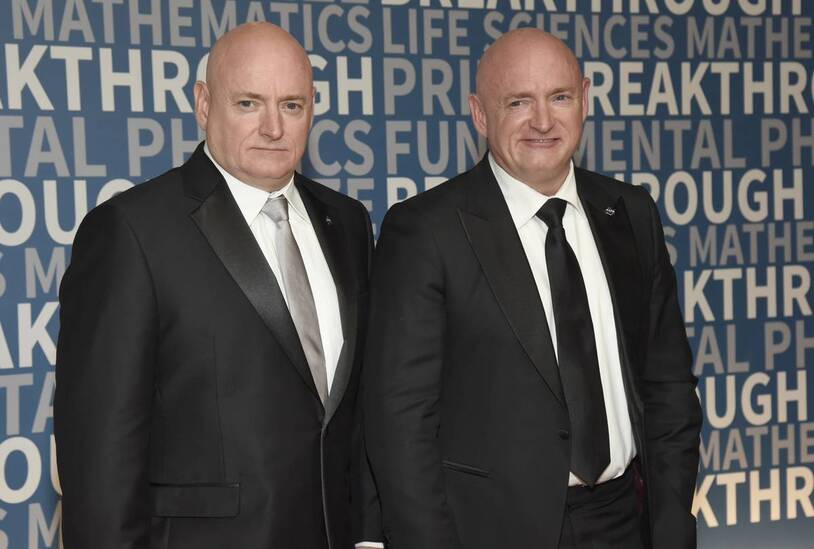
Source: Tim Mosenfelder/Getty Images
Meanwhile, when Mark Kelly retired from NASA in 2011, he wrote a children’s book about space exploration. Mark also co-founded World View Enterprises, a company specializing in near-space exploration. He also founded Americans for Responsible Solutions, focusing on gun control policies. In 2020, he was elected Senator of Arizona and contributed his expertise to NASA’s ongoing research endeavors alongside his brother Scott.
